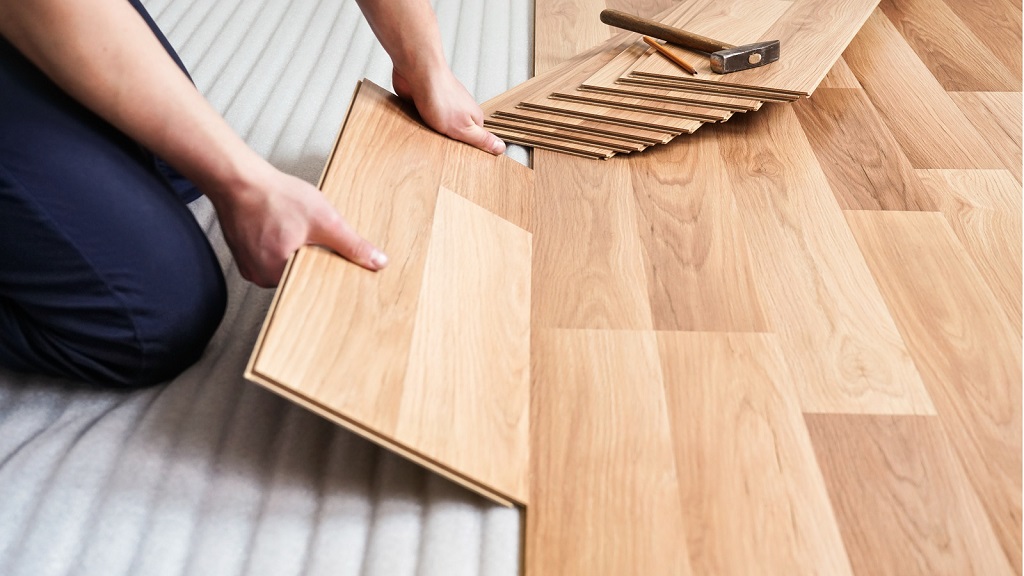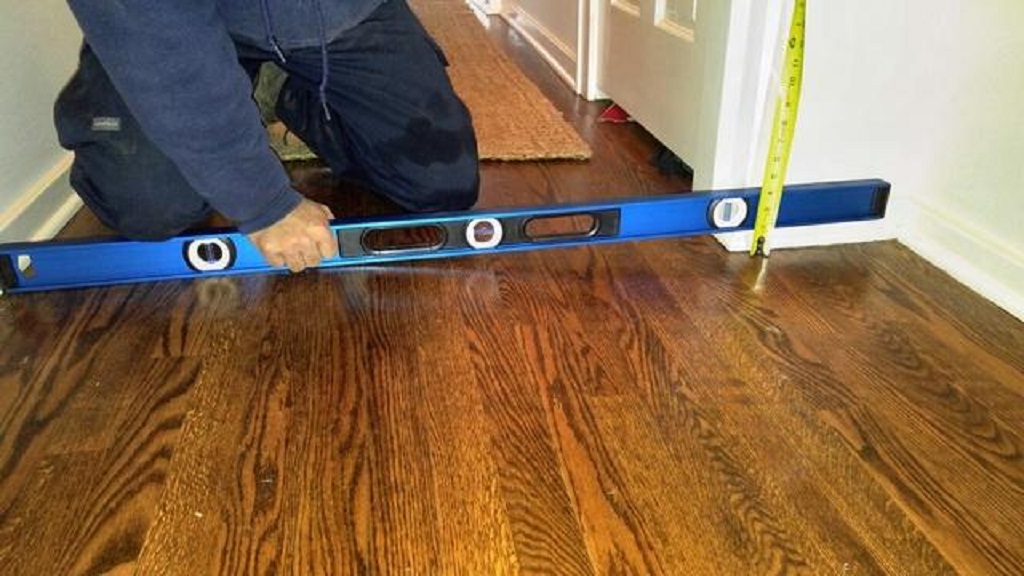
08 Feb How to Fix Sagging Floors on Second Floor: A Proven Guide
To fix sagging floors on the second floor, you can “sister” the sagging floor joists or jack up the floor joists in the crawl space. Hiring a trained professional is recommended, as sagging floors often indicate a deeper structural issue.
Sagging floors in old houses is standard, and while installing a beam to stiffen the floor is an option, it’s best to avoid attempting to jack up the floor without professional assistance.
Recognizing The Problem

Sagging floors on the second floor can cause concern and should not be overlooked. Not only can they affect the structural integrity of your home, but they can also pose serious safety risks. Recognizing the signs of sagging floors is crucial to addressing the problem promptly and preventing further damage.
Signs Of Sagging Floors
Identifying the signs of sagging floors early on is critical to avoid potential complications. Here are some common indicators that you may have sagging floors on the second floor:
- Uneven or sloping floors
- Gaps between the baseboards and the floor
- Cracks in the walls or ceiling
- Doors that no longer latch properly
- Creaking or squeaking sounds when walking on the floor
Importance Of Timely Inspection
Regarding sagging floors on the second floor, addressing the issue promptly is crucial. Delaying inspection and repairs can lead to further damage and pose safety risks for you and your family. Timely inspection can help determine the underlying cause of the sagging floors and guide the appropriate course of action to fix the problem. For expert advice and solutions on tackling such issues, consulting a resource like https://standfastcreative.com/ can be invaluable. Their insights can assist in identifying the most effective strategies to ensure your home remains safe and structurally sound.
Having a trained professional inspect your floors is highly recommended, as they have the expertise to identify the root cause of the issue and provide effective solutions. Ignoring the problem or attempting DIY fixes without proper knowledge can worsen the situation and result in costly repairs.
By recognizing the signs of sagging floors and prioritizing timely inspections, you can prevent further damage and ensure the safety and stability of your home. Please don’t wait until it’s too late; take action now to fix sagging floors on the second floor!
Causes Of Sagging Floors
Weakened floor joists, foundation settling, or inadequate support can cause sagging floors on the second floor. Fixing sagging floors may involve “sistering” the floor joists or jacking them up in the crawl space. For a professional assessment and repair, it’s best to consult a trained professional to ensure the structural integrity of your home.
Structural Issues
One of the major causes of sagging floors on the second floor is structural issues. Over time, the structural components of a building may weaken or deteriorate, leading to sagging floors. This can occur for various reasons, such as
- Insufficient support beams or joists
- Weakened or damaged foundation
- Inadequate construction methods
Moisture And Water Damage
Moisture and water damage can also contribute to sagging second-floor floors. When moisture infiltrates the structural components of a building, it can weaken the wood, causing it to warp or rot. Familiar sources of moisture and water damage include:
- Leaking pipes or plumbing fixtures
- Poorly sealed windows or doors
- Inadequate ventilation in bathrooms or kitchens, leading to condensation
- Flooding or high levels of humidity
Age And Wear
Another factor that can lead to sagging floors on the second floor is age and wear. As buildings age, the materials used in their construction may deteriorate, resulting in structural instability. Constant foot traffic or heavy loads can gradually weaken the floor joists and supports. Signs of age and wear that may contribute to sagging floors include:
- Creaking or squeaking floors
- Cracks in walls or ceilings
- Uneven or sloping floors
- Visible gaps between floorboards or flooring materials
Assessing The Repair Needs
When dealing with sagging floors on the second floor of your home, it’s crucial to accurately assess the repair needs before initiating any restoration efforts. By identifying the underlying issues and understanding the scope of repair, you can ensure a proper and effective solution to resolve the problem. This approach is especially pertinent if you’re contemplating whether should buy a house with sagging floors. Understanding the extent of repairs required can help you make an informed decision regarding the purchase and potential investment in remediation. Here’s how you can assess the repair needs for sagging second-floor floors, ensuring that any intervention is both timely and effective.
Professional Inspection
Engage a qualified professional to inspect the sagging floors. A professional’s expertise will help accurately diagnose the underlying structural issues causing the sagging. They will assess the condition of the floor joists, subfloor, and other structural elements, providing valuable insights into the extent of the damage and the most suitable repair methods.
Scope Of Repair
After the professional inspection, the scope of repair will be clearly outlined. This includes identifying the specific areas that require attention, such as addressing weakened floor joists, reinforcing the subfloor, or correcting foundation-related issues. Understanding the scope of repair is essential for effectively planning the necessary remediation work, ensuring a comprehensive and lasting solution to the sagging floors.
Consideration Of Floor Type
Consider the type of floor in the assessment process. Whether it’s a wooden floor, concrete subfloor, or other materials, the type of floor will influence the repair techniques and materials needed. Understanding the floor type is crucial for implementing the most appropriate repair methods that are tailored to the specific characteristics of the flooring, thereby ensuring a successful restoration of the second-floor structure.
Diy Methods Vs. Professional Solutions
To fix sagging floors on the second floor, you have two options: DIY methods or hiring professionals. Both approaches have advantages and considerations that you need to consider.
Diy Floor Leveling Techniques
If you are a confident do-it-yourselfer, you may be tempted to level your sagging floors independently. There are several DIY techniques you can try, including:
- Using shims to fix isolated areas of sag
- Sistering the floor joists in the basement or on the second-story
- Jacking up floor joists in the crawl space
- Add pieces or layers of plywood to provide additional support
- Using a floor leveler to even out uneven areas
While these DIY methods may seem cost-effective and appealing, it’s important to note that they require a certain level of expertise and can be time-consuming. Additionally, these techniques may not provide a long-term solution to your sagging floor problem if not done correctly.
Benefits Of Hiring Professionals
Hiring professionals is your best bet if you want a more reliable and efficient solution to fix your sagging floors. Here are some advantages of choosing professional solutions:
- Expertise: Professionals have the knowledge and experience to assess the underlying structural issues causing the sagging floors and provide targeted solutions.
- Efficiency: Professionals are equipped with the necessary tools and equipment to execute the repair process effectively and efficiently.
- Long-lasting Results: By hiring professionals, you can ensure that the repair is done correctly, providing a durable solution that can increase the stability and value of your home.
- Time-saving: Professionals can complete the job in less time than DIY methods, allowing you to enjoy your renovated floors sooner.
However, it’s essential to consider the cost associated with hiring professionals. While it may be a more significant investment upfront, the quality of their work can outweigh the DIY option in terms of durability and long-term value.
Choosing The Right Fix

When fixing sagging floors on the second floor, choosing the proper fix is crucial to ensure stability and safety. There are several methods you can consider, depending on the severity of the issue and the underlying cause. Here are three common approaches:
Reinforcing Floor Joists
One effective way to fix sagging floors is by reinforcing the floor joists. This method involves adding additional support to the existing joists to strengthen them and prevent further sagging. It is beneficial when the issue is caused by weakened or damaged joists.
To reinforce floor joists, you can:
- Sister the joists by attaching new pieces of lumber alongside the existing ones. This creates a stronger bond and redistributes the weight load.
- Install support beams or columns under the floor joists to provide additional reinforcement and prevent further sagging.
Replacing Subflooring
If the sagging is caused by damaged or rotten subflooring, replacing it may be necessary. Subflooring acts as a sturdy base for the finished flooring and supports the weight of the occupants and furniture. Over time, it can deteriorate due to moisture, pests, or wear and tear.
To replace subflooring:
- Remove the sagging subfloor by cutting away the affected area.
- Lay a new subfloor using plywood or other suitable materials.
- Ensure proper installation and secure the new subfloor to prevent future sagging.
Lifting And Leveling Techniques
Sometimes, sagging floors can be lifted and leveled without major structural modifications. This method is suitable when the sagging is due to uneven settling or poor foundation support.
There are various techniques to lift and level a sagging floor, including:
- Using floor levelers or self-leveling compounds to fill in low spots and create a smoother, more even surface.
- I am a. Add shims or wedges under the sagging areas to gradually raise and level the floor.
- Using hydraulic jacks or screw jacks to lift and support the floor joists, then securing them in the desired position.
It’s important to note that experienced professionals should perform lifting and leveling techniques to ensure proper structural integrity and prevent further damage.
You can restore stability and safety to your second floor by choosing the proper fix for your sagging floors. Whether reinforcing floor joists, replacing subflooring, or utilizing lifting and leveling techniques, consult a qualified contractor to assess the situation and determine the best action.
Frequently Asked Questions For How To Fix Sagging Floors On Second Floor
How Do You Fix A Second Floor Sag?
To fix a sagging second floor, you can use two primary methods. One is “sistering” the sagging floor joists in the basement or on the second story. The other method is jacking up floor joists in the crawl space. It is recommended that you consult a professional for proper inspection and repair.
How Much Does It Cost To Repair A Sagging Second Floor?
The cost to repair a sagging second floor depends on the extent of the damage and the method of repair. Generally, the price can range from a few hundred to several thousand dollars. It is recommended to consult with a professional for an accurate assessment and estimate.
How Do You Level An Uneven Upstairs Floor?
To level an uneven upstairs floor, use an underlayment, floor leveler, or floor patch product to fix low spots in a wood or concrete subfloor. These products can help insulate, absorb sound, reduce wear, and act as a vapor barrier.
Do Sagging Floors Need To Be Fixed?
Yes, sagging floors need to be fixed. Sagging floors are almost always a sign of a deeper structural problem and should be inspected and repaired by a trained professional. Several methods can improve sagging floors, such as sistering the floor joists or jacking up the floor joists in the crawl space.
Conclusion
Addressing sagging floors on the second floor is essential to maintain the structural integrity of your home. With proper inspection and professional assistance, you can implement practical solutions such as sistering floor joists or adding additional support in the crawl space.
Don’t overlook the signs of sagging floors; timely repair can prevent further damage and ensure a safer living environment. When addressing issues like a deteriorating door frame, follow the proper steps on how to replace it to maintain the structural integrity of your home.



Sorry, the comment form is closed at this time.